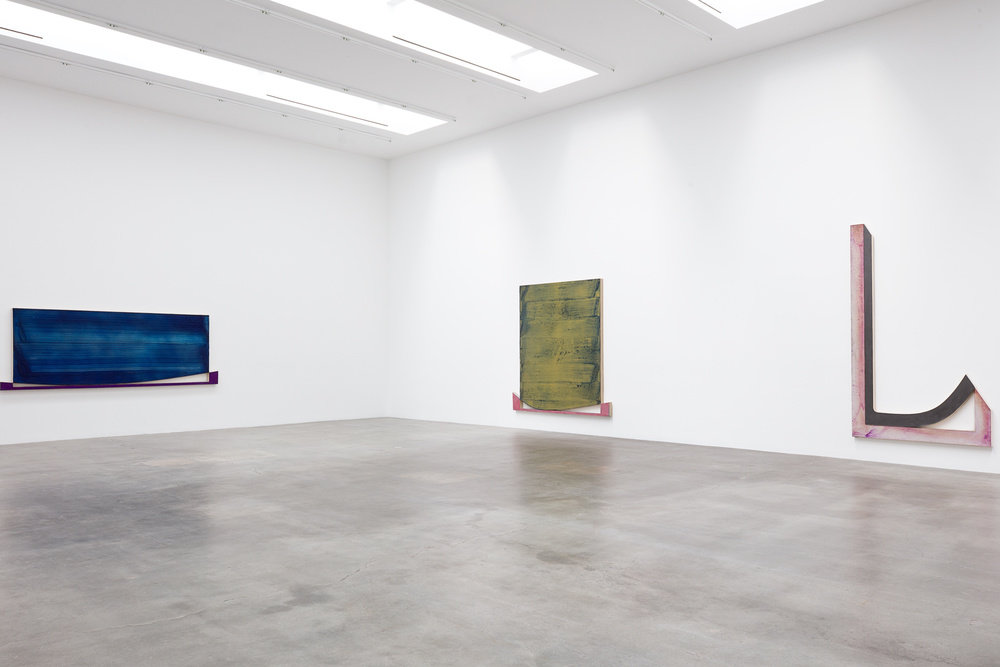Harvey Quaytman

Harvey Quaytman
November 9, 2019 – January 11, 2020Los Angeles
Biography
Harvey Quaytman (b. 1937, Rockaway, NY; d. 2002, New York, NY), a self-professed “classical modernist,” began his career in the 1960s at a time when painting had been declared dead. An under-recognized figure in the written history of modernist abstraction, yet always an artist’s artist with a wide range of influence, Quaytman was perceived through the lenses of Constructivism, Minimalism, and Abstract Expressionism. He was also influenced by such visual cues as Islamic calligraphy and the curved wings of airplanes and birds, references that emerge as his oeuvre shifted from the rectangular canvas to the monumental shaped canvases that are acknowledged as moving abstract painting toward a more sculptural form, reshaping the trajectory of American painting in the 1960s and ’70s. Known for these eccentrically shaped works as well as his later rust cross paintings, Quaytman was a master of color and texture. He skillfully poured paint, spreading Rhoplex over canvas with broad wallpaper brushes after dusting it with pure pigment that settled in thick, unpredictable strata. He later flecked canvas with glass or iron filings and used additives such as marble dust in paint he always mixed himself. He often worked years to find the perfect form for an image, and when asked by an interviewer what the point was of abstraction in a fractured world, he answered, “if you are able to concentrate everything you believe into your work, then it’s ethically and socially valuable.”
Quaytman’s first posthumous museum retrospective at BAMPFA in 2018 showcased the extraordinary trajectory and breadth of his work. Critic Gwen Allen, writing in Artforum, called it “a revelation” that offered viewers the opportunity to “marvel at the strange, beautiful objects he produced.” The exhibition catalogue (UC Press, 2018) offers the most in-depth scholarship on Quaytman to date, with new essays by art critic John Yau, the artist R. H. Quaytman (his daughter), and art historian Suzanne Hudson, who writes about the year 1966, when the artist began making shaped canvases and opened up the idea of “the armature as a fundamental element of a painting to further question.”
Born in Far Rockaway, New York, Harvey Quaytman was the grandson of Polish and Russian Jewish immigrants. He earned his BFA in painting at the Boston Museum School and Tufts University, Boston. During his lifetime he had more than sixty solo exhibitions worldwide, including New York, Los Angeles, London, Berlin, Cologne, Paris, Copenhagen, Stockholm, and Oslo. His work is represented in museum collections worldwide, including those of the Museum of Modern Art, New York, NY; Whitney Museum of American Art, New York, NY; Phillips Collection, Washington, D.C.; Tate Gallery, London, UK; Houston Museum of Fine Arts, Houston, TX; Carnegie Museum of Art, Pittsburgh, PA; Harvard Art Museums/Fogg Art Museum, Cambridge, MA; Israel Museum, Jerusalem, Israel; Louisiana Museum of Modern Art, Humlebaek, Denmark; National Gallery of Australia, Canberra, Australia; and the Yale University Art Gallery, New Haven, CT.
Selected Works
News
On Harvey Quaytman | Apsara DiQuinzio, Suzanne Hudson, Lindsay Preston Zappas | Blum & Poe, Los Angeles
12/07/2019
The Harvey Quaytman Trust Joins Blum & Poe
05/03/2019
Artforum: Harvey Quaytman
01/01/2019
Brooklyn Rail: Harvey Quaytman – Against the Static
12/11/2018
Harvey Quaytman | Against the Static
10/17/2018
Art in America: Harvey Quaytman
03/16/2017
Related Publications
Harvey Quaytman: Against the Static